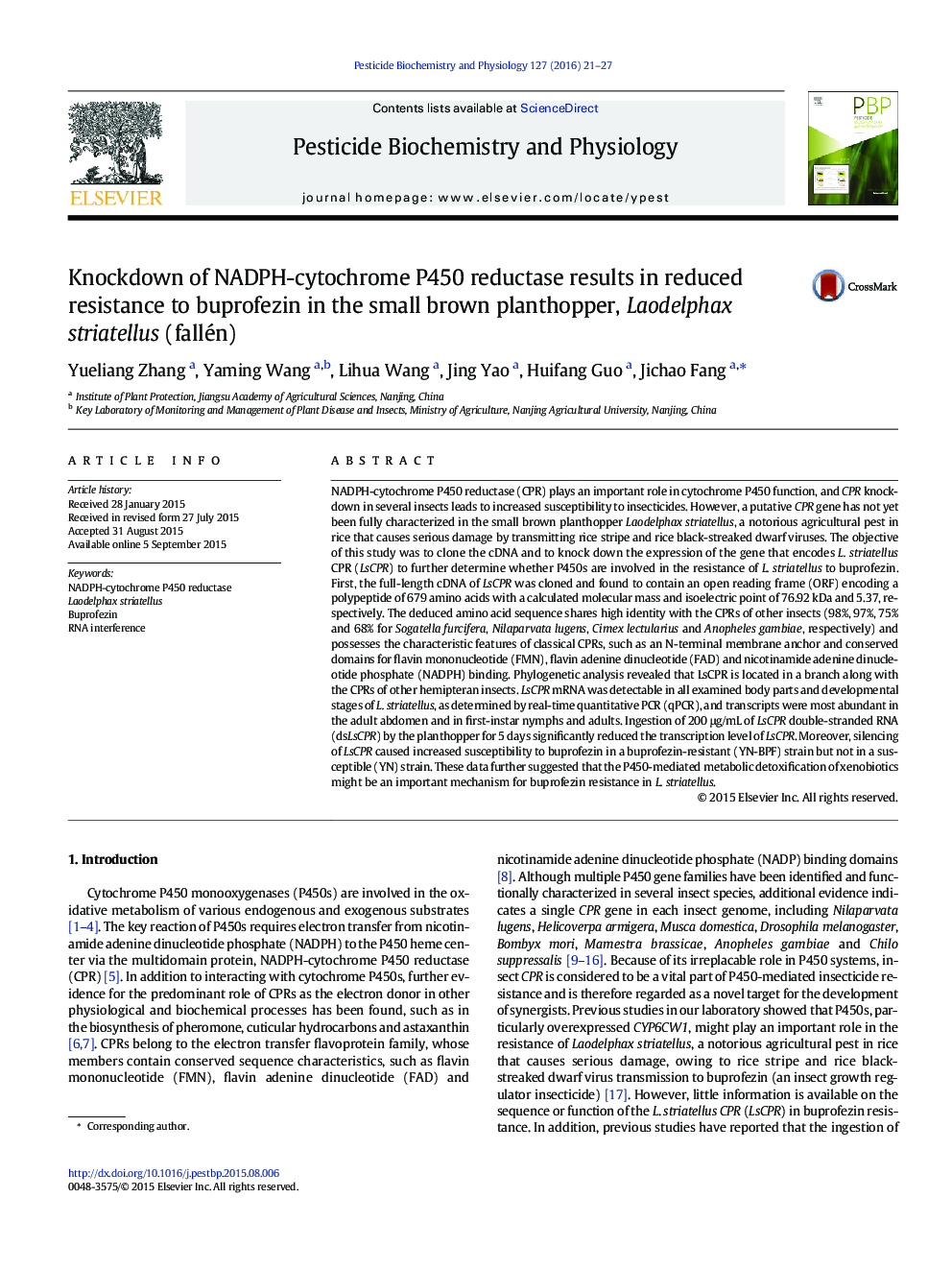| Article ID | Journal | Published Year | Pages | File Type |
|---|---|---|---|---|
| 2009016 | Pesticide Biochemistry and Physiology | 2016 | 7 Pages |
•The full-length cDNA that encoding for LsCPR was firstly cloned•qPCR and sequence analysis did not find any difference between the buprofezin resistant (YN-BPF) and susceptible (YN) strains•Disgestion RNAi of LsCPR significantly reduced the transcription level of the mRNA and resulted in increased buprofezin susceptibility in the YN-BPF strain but not in the YN strain.
NADPH-cytochrome P450 reductase (CPR) plays an important role in cytochrome P450 function, and CPR knockdown in several insects leads to increased susceptibility to insecticides. However, a putative CPR gene has not yet been fully characterized in the small brown planthopper Laodelphax striatellus, a notorious agricultural pest in rice that causes serious damage by transmitting rice stripe and rice black-streaked dwarf viruses. The objective of this study was to clone the cDNA and to knock down the expression of the gene that encodes L. striatellus CPR (LsCPR) to further determine whether P450s are involved in the resistance of L. striatellus to buprofezin. First, the full-length cDNA of LsCPR was cloned and found to contain an open reading frame (ORF) encoding a polypeptide of 679 amino acids with a calculated molecular mass and isoelectric point of 76.92 kDa and 5.37, respectively. The deduced amino acid sequence shares high identity with the CPRs of other insects (98%, 97%, 75% and 68% for Sogatella furcifera, Nilaparvata lugens, Cimex lectularius and Anopheles gambiae, respectively) and possesses the characteristic features of classical CPRs, such as an N-terminal membrane anchor and conserved domains for flavin mononucleotide (FMN), flavin adenine dinucleotide (FAD) and nicotinamide adenine dinucleotide phosphate (NADPH) binding. Phylogenetic analysis revealed that LsCPR is located in a branch along with the CPRs of other hemipteran insects. LsCPR mRNA was detectable in all examined body parts and developmental stages of L. striatellus, as determined by real-time quantitative PCR (qPCR), and transcripts were most abundant in the adult abdomen and in first-instar nymphs and adults. Ingestion of 200 μg/mL of LsCPR double-stranded RNA (dsLsCPR) by the planthopper for 5 days significantly reduced the transcription level of LsCPR. Moreover, silencing of LsCPR caused increased susceptibility to buprofezin in a buprofezin-resistant (YN-BPF) strain but not in a susceptible (YN) strain. These data further suggested that the P450-mediated metabolic detoxification of xenobiotics might be an important mechanism for buprofezin resistance in L. striatellus.
Graphical abstractFigure optionsDownload full-size imageDownload as PowerPoint slide
